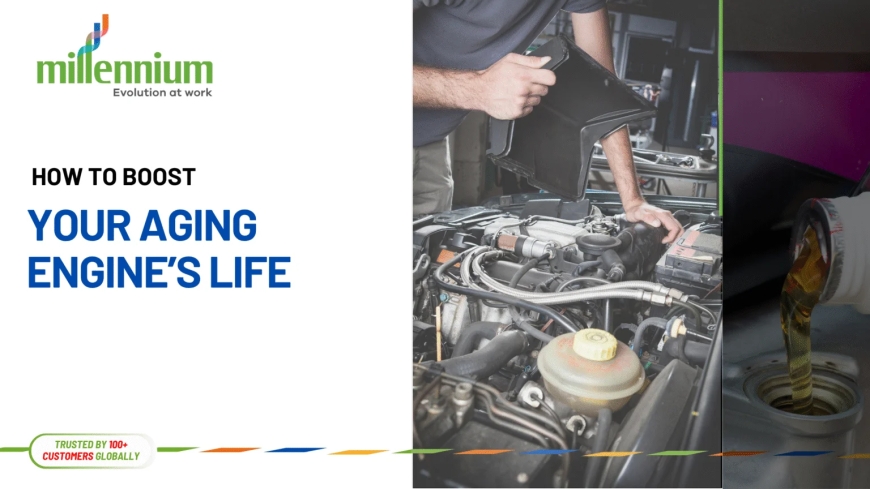How to Boost Your Aging Engine’s Life
Aging engines demand more attention—but they can still deliver years of reliable service if treated right.

As vehicles age, their engines begin to show signs of fatiguemuch like any machine that has clocked years of use. But age doesnt have to mean the end. With the right approach, even an engine that's past its prime can keep running reliably. Whether you're trying to preserve your daily driver or extend the life of a secondhand car, this comprehensive guide explores fresh and effective strategies for keeping your aging engine alive and kicking.
Common Signs of an Aging Engine
An engine rarely fails overnight. Instead, it sends subtle signalsif you know what to look for:
-
Hard starts in the morning: If your engine takes longer than usual to fire up, it could be a sign of worn cylinders or weak compression.
-
Reduced throttle response: A delay in acceleration or a sluggish feel might indicate ignition system deterioration or clogged injectors.
-
Uneven engine noise: A healthy engine runs smoothly. Irregular idling, ticking sounds, or rhythmic knocking can suggest wear in internal components.
-
Oil smells inside the cabin: Aging engines often develop small leaks, and if oil drips onto hot parts of the engine, it can produce distinct smells that seep into the interior.
-
Increased exhaust moisture or residue: If you notice water or black residue collecting near the tailpipe, it could indicate incomplete combustion or excessive condensation caused by inefficient firing.
Spotting and interpreting these signs of aging engine early gives you a chance to act before issues become irreparable.
Regular Maintenance: The Key to Longevity
Routine care remains one of the best ways to counteract engine aging. But for older engines, maintenance needs to be both consistent and strategic:
-
Upgrade to high-ZDDP oils: Zinc Dialkyldithiophosphate (ZDDP) additives are known for their anti-wear propertiesespecially useful for older engines without roller cams.
-
Conduct annual carbon cleaning: Over time, carbon builds up inside combustion chambers, affecting performance. Annual carbon removal can restore lost power.
-
Inspect timing components more frequently: Timing belts and chains experience fatigue over time. If your engines timing slips even slightly, it can throw off performance or cause major damage.
-
Flush the fuel system: Years of deposits can clog injectors and fuel lines. A professional fuel system flush every 20,00030,000 km keeps things flowing freely.
-
Monitor engine mounts and bushings: As rubber ages, it hardens and cracks, increasing engine vibration. Replace worn mounts to reduce structural stress.
In older engines, preventive maintenance should be seen not just as upkeep, but as preservation.
Upgrading and Replacing Parts to Boost Engine Lifespan
While repairs keep things running, smart upgrades can make an aging engine feel young again:
-
Install a performance air intake: These allow better airflow, easing the engines workload and potentially improving combustion efficiency.
-
Upgrade your thermostat and radiator cap: A modern, high-quality thermostat can offer better temperature regulation. A pressure-optimized radiator cap helps the cooling system run more efficiently.
-
Switch to performance ignition coils: If your engine hesitates or misfires, aftermarket ignition coils can provide more reliable spark energy.
-
Add an oil catch can: Especially in older engines, blow-by gases contaminate oil. An oil catch can reduces carbon buildup and keeps oil cleaner for longer.
-
Consider ceramic-coated headers: These aftermarket exhaust parts reduce engine bay heat, improving overall thermal efficiency and protecting nearby components.
These upgrades may cost a bit more up front but pay off by reducing stress on aging internal parts.
Avoiding Common Mistakes That Shorten Engine Life
Many engine problems dont stem from wearthey come from user error. Avoid these bad habits if you want to keep your old engine on the road:
-
Running on low fuel often: This forces the fuel pump to overwork and increases the chance of sediment from the tank clogging the system.
-
Skipping minor repairs: A small oil leak, for instance, might seem harmlessbut over time, it can damage gaskets, belts, and electrical parts.
-
Driving short distances only: Engines need time to reach optimal operating temperature. Short, cold drives prevent oil from circulating fully and contribute to condensation buildup.
-
Using cheap parts or low-grade fluids: Older engines are less forgiving of poor-quality components. Stick to OEM or high-performance alternatives for best results.
-
Ignoring warning lights: That check engine light isnt just decoration. Use an OBD2 scanner or visit a mechanic to diagnose any alerts promptly.
A little vigilance goes a long way in keeping your engine out of the shop.
When to Consider Replacing the Engine or Car
No matter how well you care for it, every engine reaches a limit. Recognize when its time to stop pouring money into repairs:
-
The engine has low compression in multiple cylinders: This generally signals worn piston rings or valves, both of which require expensive internal work.
-
The car fails emissions tests repeatedly: If upgrades and repairs cant bring your car into compliance, replacement may be the only viable option.
-
Major oil contamination issues: If coolant is mixing with oil, it likely means a cracked block or blown head gasketa labor-intensive and costly fix.
-
Excessive fuel consumption: If the engine burns significantly more fuel than it should, even after tune-ups, the internal wear may be irreversible.
-
Safety or structural concerns with the car: Sometimes, the engine is finebut rusted frames, failed suspensions, or outdated safety systems make the car unfit to keep.
When repair costs consistently outpace vehicle value or reliability, replacement becomes a smarter and safer long-term decision.
Conclusion
Aging engines demand more attentionbut they can still deliver years of reliable service if treated right. By identifying wear early, sticking to high-level maintenance routines, upgrading thoughtfully, and avoiding common missteps, you can keep your engine running longer than you might expect. Ultimately, caring for your engine is an investment not just in your vehicle, but in your own peace of mind every time you turn the key.











































